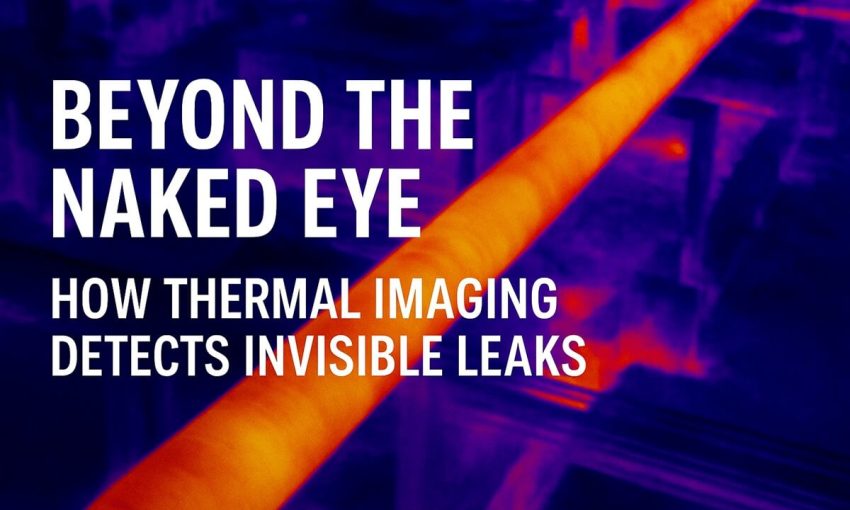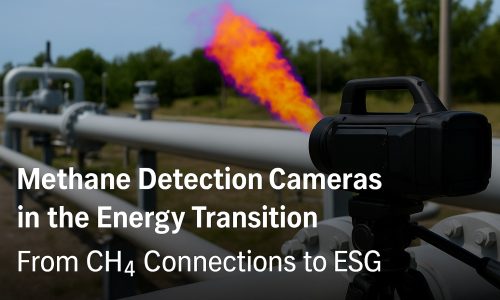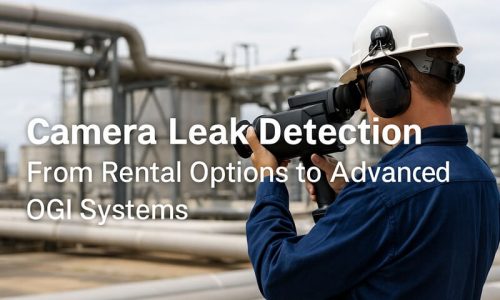Introduction: The Human Eye Can’t See Thermal or Gas Anomalies
Gas leaks and thermal anomalies are among the most dangerous and costly issues in modern industry. The problem is simple: the human eye cannot detect them. Invisible leaks in pipelines, valves, or storage tanks can go unnoticed for weeks, sometimes months, until they cause catastrophic accidents, production downtime, or environmental damage. Traditional methods of leak detection, such as manual inspections or chemical sensors, often fail to provide early warnings and are limited in scope.
This is where thermal imaging and Optical Gas Imaging (OGI) come into play. These technologies extend human vision beyond the visible spectrum, allowing operators to “see” what was once invisible. Instead of waiting for signs of corrosion, unusual smells, or pressure drops, industries can now identify leaks in real time, prevent costly incidents, and ensure compliance with strict environmental regulations.
The Science of Thermal Imaging and OGI
thermal imaging leak detection works by detecting infrared radiation – heat – emitted by objects. Every material has a unique thermal signature, and when there is a temperature difference, thermal cameras can visualize it. For example, a leak in a pipeline often creates subtle thermal variations in the surrounding environment, which a camera can detect long before the human eye.
Optical Gas Imaging (OGI) takes this principle further. Instead of just detecting heat, OGI cameras use spectral filters to visualize specific gases that absorb infrared light. Methane, sulfur hexafluoride (SF6), and volatile organic compounds (VOCs) – normally invisible – become visible on screen as smoke-like plumes. This allows inspectors to instantly identify the source of a leak without shutting down operations or exposing personnel to hazardous conditions.
With companies like Opgal leading the innovation, thermal imaging and OGI systems have become increasingly compact, accurate, and easy to integrate into industrial workflows. This scientific breakthrough has changed the way industries approach safety and maintenance.
Detecting Leaks Faster than Conventional Tools
Traditional detection methods, such as fixed-point gas sensors or manual inspections, are slow and often unreliable. Sensors can only detect leaks when gas reaches a specific concentration near the device, meaning small or distant leaks may be missed. Manual inspections, on the other hand, are labor-intensive and prone to human error.
Thermal imaging and OGI cameras revolutionize this process:
-
Wide-area monitoring: Inspectors can scan large facilities quickly, covering kilometers of pipelines or multiple storage tanks in minutes.
-
Real-time detection: Leaks appear instantly on screen, allowing for immediate corrective action.
-
Non-contact, remote operation: Cameras can detect leaks from a safe distance, keeping workers out of harm’s way.
-
Versatility: Whether mounted on tripods, drones, or handheld units, thermal cameras adapt to different inspection environments.
Compared to conventional tools, this technology not only saves time but also provides a higher level of accuracy and reliability. In industries where every minute counts, the ability to detect a leak instantly can be the difference between minor maintenance and a multimillion-dollar disaster.
Preventing Accidents, Fines, and Downtime
Leaks are not just an operational inconvenience – they are a serious safety and financial risk. Explosive gases like methane can lead to catastrophic accidents if undetected. Toxic gases such as benzene or ammonia pose severe health risks to workers and surrounding communities. On top of safety concerns, undetected leaks often result in regulatory fines and legal liabilities.
The costs of downtime are equally significant. In oil & gas, petrochemical, or power generation facilities, even a short shutdown can result in losses of millions of dollars. Thermal imaging provides a proactive tool to identify and fix issues before they escalate, minimizing disruption.
Furthermore, in today’s regulatory landscape, environmental compliance is non-negotiable. Governments worldwide enforce strict emission limits, and companies that fail to comply face heavy penalties. By integrating Opgal’s thermal and OGI solutions, industries not only protect workers and assets but also demonstrate their commitment to sustainability and environmental responsibility.
Why Leading Industries Rely on Opgal Solutions
At the end of the day, leak detection is not just about technology – it’s about trust, reliability, and proven performance in the field. For decades, Opgal has been at the forefront of thermal imaging and OGI innovation, delivering solutions to some of the most demanding industries in the world.
-
Oil & Gas: Detecting hydrocarbon leaks across pipelines, refineries, and offshore rigs.
-
Petrochemicals: Monitoring complex facilities where even small leaks can have massive consequences.
-
Power Plants: Identifying gas leaks and thermal anomalies that could disrupt energy production.
-
Environmental Agencies: Supporting global efforts to reduce greenhouse gas emissions and meet ESG targets.
What sets Opgal apart is the combination of cutting-edge technology with practical field experience. Their cameras are designed not only for precision but also for usability – giving operators the tools they need to act quickly and confidently.
For industries where safety, efficiency, and compliance are critical, Opgal provides more than just cameras – it provides peace of mind. By allowing companies to see beyond the naked eye, Opgal ensures that invisible threats never go unnoticed.
With Opgal’s thermal imaging and OGI solutions, the invisible becomes visible – keeping industries safer, greener, and more efficient.





